Historically, the “fifth wheel” referred to a rotating wheel placed at the front of a horse-drawn carriage to support the front axle.
This pivotal wheel allowed for greater maneuverability. Over time, as technology advanced and vehicles no longer required this mechanism, the term gained a new cultural meaning, denoting something or someone superfluous or unnecessary. This hitch has evolved into a U-shaped mechanism. Today, it easily attaches to the gooseneck hitch found on the RV.
However, with the advent of the automotive industry, “fifth wheel” began to signify a specialized type of hitch that facilitates the connection between a large truck and a trailer or camper.
Origins of the Term ‘Fifth Wheel’
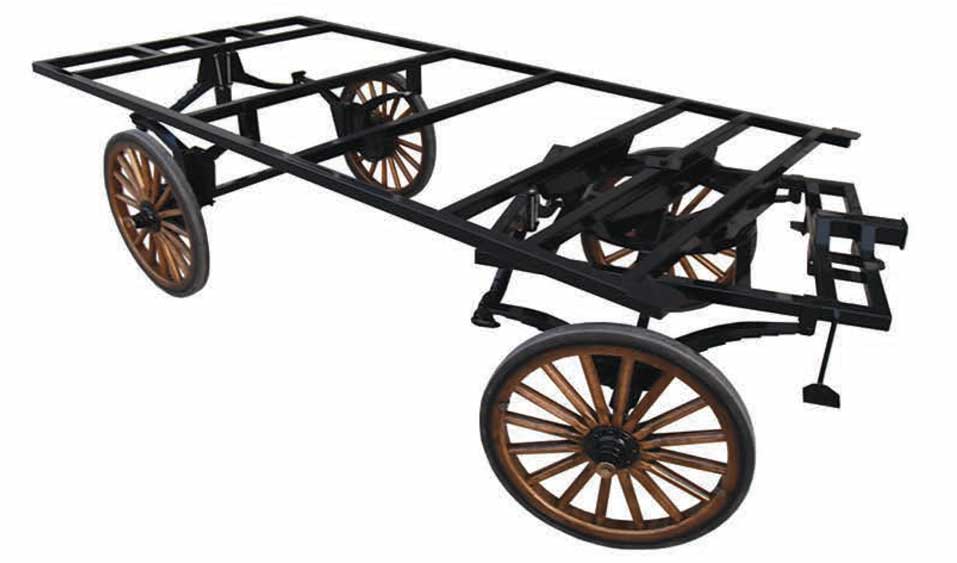
The term “fifth wheel” has its roots in early transport mechanisms, evolving significantly over time from aiding carriages to becoming integral in the automotive industry.
Historical Use in Carriages
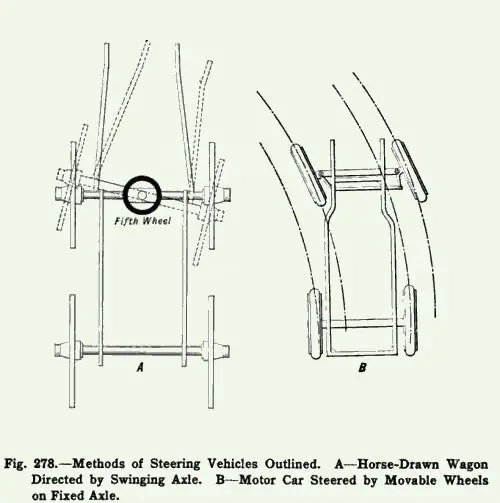
In the era of horse-drawn carriages, the “fifth wheel” was a critical component facilitating improved maneuverability.
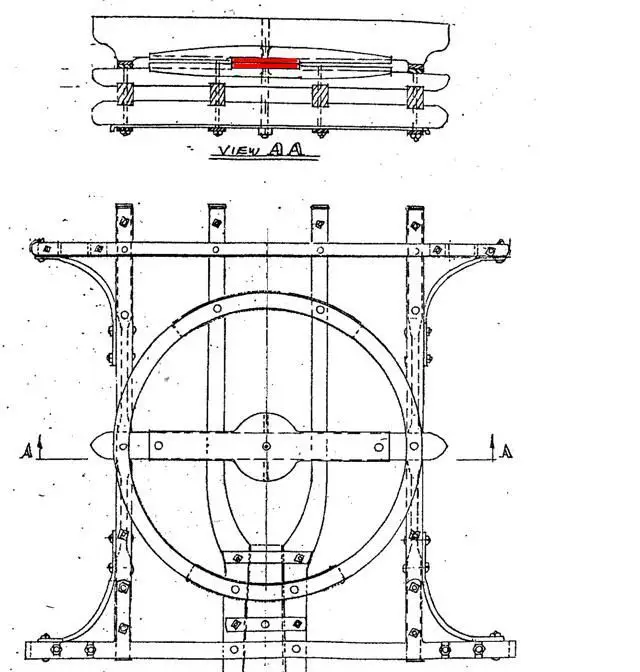
Carriages and carts typically possessed four wheels, yet the additional, so-called fifth wheel allowed for the front axle assembly to pivot, easing the process of turning.
This was particularly beneficial in facilitating smoother and more flexible movement of the carriage, where the fifth wheel was not an actual wheel but rather a rotating disc that simplified the steering of a four-wheeled carriage.
Evolution into the Automotive Industry
Transitioning from horse-drawn carriages, the fifth wheel’s concept was adopted into the automotive industry.
The modern interpretation of the fifth wheel is quite different from its historical counterpart, evolving from a steering mechanism to a pivotal connection point in large vehicles. In particular, the fifth wheel now often refers to a U-shaped coupling component essential for towing.
This component includes a wheel-shaped plate that attaches to a trailer’s frame connecting it to a corresponding kingpin on the towing vehicle, usually trucks.
This design guarantees a secure yet flexible connection, ensuring stability and maneuverability. Understanding RV classes can provide insight into the various applications of fifth wheel mechanisms in modern recreational vehicles.
Modern Fifth Wheels and RV Culture
As a seasoned RV enthusiast, I understand that the evolution of the fifth wheel trailer has significantly shaped modern RV culture. The term now refers to a particular style of RV that offers distinct advantages for comfort and mobility.
Fifth Wheel Trailers Today
Fifth wheel trailers have transformed from their historical roots into luxurious, spacious homes on wheels.
These vehicles are known for their distinctive fifth-wheel coupling, which affords them enhanced stability and ease of movement compared to traditional travel trailers.
For instance, those looking for a cozy way to enjoy retirement might find a small fifth-wheel option appealing, providing just the right balance of comfort and maneuverability.
Traveling in these modern marvels offers a unique blend of the freedom of the open road with many of the comforts of a traditional home.
Features like slide-outs, high ceilings, and full kitchens are commonplace. Plus, the separation between the living space and the towing vehicle adds an extra layer of versatility to the fifth wheel experience.
The Rise of RV Living
The allure of RV living beckons for many as it promises an unmatched sense of freedom and an intimate connection with the splendor of nature.
For those torn between the spaciousness of a motorhome and the towing convenience of a trailer, weighing the pros and cons of a fifth wheel versus a Class A motorhome is crucial.
The RV community is as diverse as the rigs they drive, with people from all walks of life finding common ground at campgrounds and in the shared experiences of travel.
Informal gatherings and structured RV clubs provide ample opportunities for fellowship and sharing best practices about the RV way of life.
Whether you’re a solo traveler, a family on summer vacation, or retirees embarking on a life of exploration, RVs—and fifth wheels, in particular—offer a means to pursue passion for adventure and comfort.
Technical Aspects of Fifth Wheels
In my examination of fifth wheels, I’ll first detail the mechanics of hitching and towing with these systems, then explain their design features that enhance stability.
Fifth Wheel Hitch and Towing
The fifth wheel hitch is a pivotal element in the design of towing vehicles. This specialized hitch is secured in the bed of a truck, allowing for a robust connection between the towing vehicle and a semi-trailer.
My understanding of its mechanism involves a kingpin on the trailer and a horseshoe-shaped coupling on the hitch, which together allow for pivotal movement necessary for efficient turning.
- Connection: The fifth wheel hitch engages with a kingpin on the trailer.
- Movement: It provides the freedom for vertical and horizontal pivoting, crucial for turning.
When it comes to towing, this connection distributes weight across the truck, ensuring that the tow vehicle has greater control and stability during transport.
Design and Stability
A fifth wheel attachment is not just about connection but also about ensuring stability and safety on the road.
Its U-shaped design allows for better distribution of the trailer’s weight across the tow vehicle, which reduces the strain on a single point and enhances the overall balance.
- Weight Distribution: Evenly spreads the load over the truck, increasing contact with the road surface.
- Hinge Mechanism: Facilitates smooth navigation around corners.
The stability of a fifth wheel setup is integral, especially when navigating through uneven terrain or during sharp maneuvers. My analysis has shown that the unique design inherently lowers the trailer’s center of gravity, improving stability.
Fifth Wheel Innovations and Considerations
In the evolving landscape of RVs, innovations in the fifth wheel domain have significantly enhanced maneuverability and usability, though they come with their own set of considerations.
From my perspective, it’s important to weigh these advancements against the total costs of ownership and the potential for depreciation.
Enhancements in Maneuverability
I’ve observed that modern fifth wheels offer remarkable improvements in turning and handling.
The pivot point being directly over the rear axle facilitates tighter turns, especially in challenging conditions. Additionally, advancements in suspension and steering systems have made long-distance travel in fifth wheels less taxing.
For instance, up-to-date hitch designs have streamlined the connection between the fifth wheel and the towing vehicle, reducing sway and improving the overall stability at high speeds or on uneven terrain.
These enhancements underscore the fifth wheel’s status as a wise investment for the avid traveler.
Pros and Cons of Ownership
From a cost perspective, owning a fifth wheel can be considered affordable relative to other types of RVs, provided the buyer understands the long-term financial commitment.
Maintenance, storage, and enhancements like window tinting for privacy and temperature control are aspects that affect overall costs.
On the flip side, it’s worth mentioning that RVs including fifth wheels, experience depreciation.
In fact, the understanding of this depreciation is essential when considering the fifth wheel as an investment.
While hurdles like depreciation might seem daunting, measures can be taken to maximize value and mitigate loss, as detailed in the analysis of the cost of RV ownership.
What stands clear is the importance of detailed and well-informed decision-making when it comes to investing in a fifth wheel.
Balancing the pros and cons, such as the improved maneuverability against the cons of costs and depreciation, is essential in assessing whether a fifth wheel complements one’s lifestyle and budget.
Fifth Wheels in the Global Perspective
As we explore fifth wheels, we should recognize that they have become more than just a practical innovation; they are a global symbol of mobility and adventure.
Cultural Significance
The concept of the fifth wheel has made significant cultural impacts, especially within the travel and transportation sectors.
In Europe, where camping and caravanning are popular leisure activities, fifth wheels have a strong presence. The Dutch, for instance, have a well-known affection for caravan holidays, where travel trailers play a vital role.
Similarly, in Germany, RV enthusiasts often turn to fifth wheels for their robustness and spacious design. Whether for vacationing or part-time living, fifth wheels represent freedom and exploration across cultures.
Fifth Wheel Manufacturing Around the World
The manufacturing of fifth wheels has a broad reach, illustrating their global importance. In the United States, a wide range of RV brands offer different styles and functionalities of fifth wheels, reflecting the diverse needs of travelers.
With numerous RV manufacturers, like those compiled in the list of the top RV manufacturers, choices for consumers are abundant.
In addition to offering variety, it’s crucial for manufacturers to provide reliability, which is why many travelers consider the most reliable warranty when purchasing an RV.
Globally, the production of fifth wheels and semi-trailers has evolved to suit regional preferences and regulations, with international brands contributing to a diverse market.
The adaptability of fifth wheels to different countries’ road systems and consumer demands showcases their worldwide impact and the innovation behind their manufacturing.


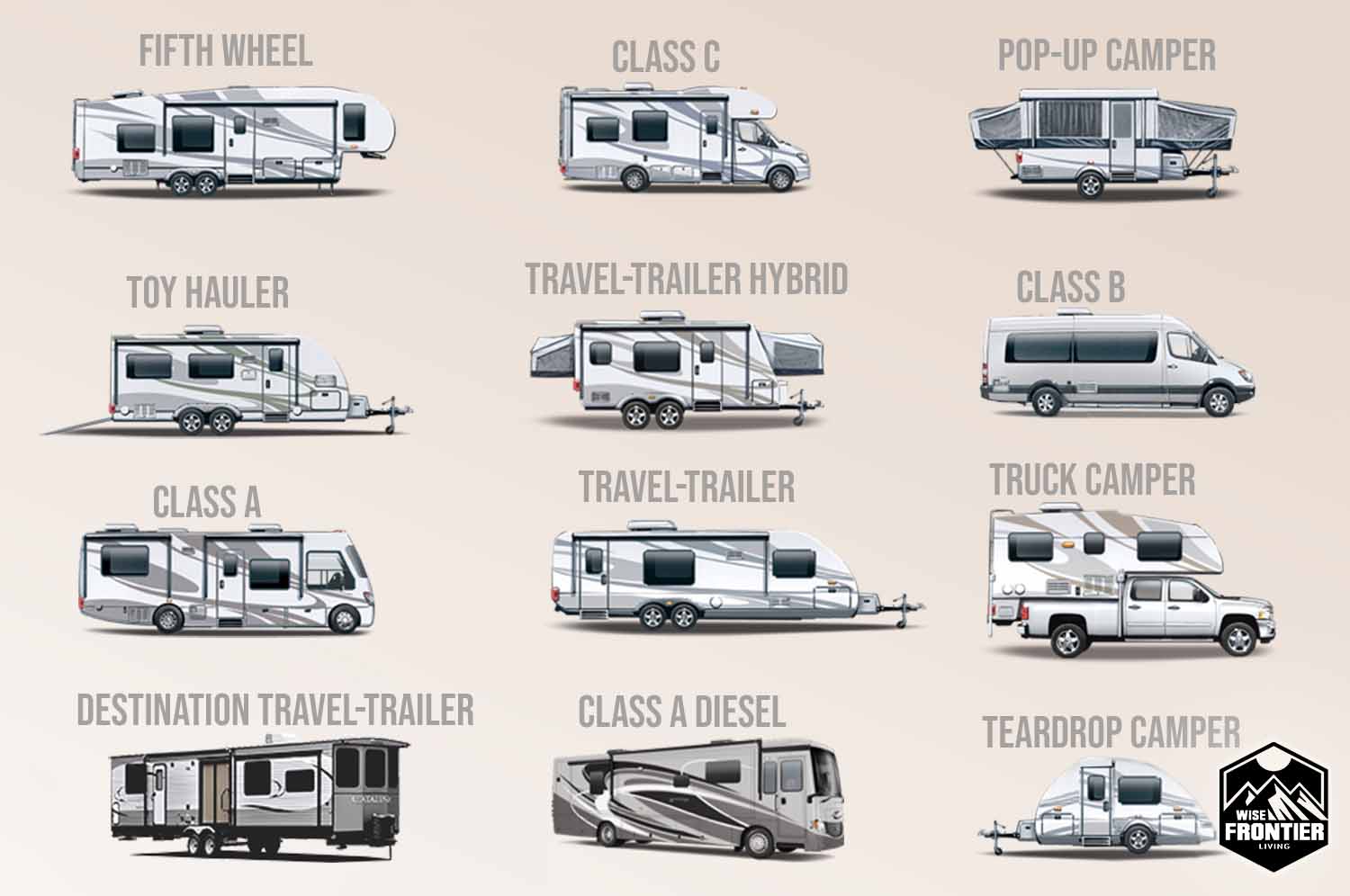

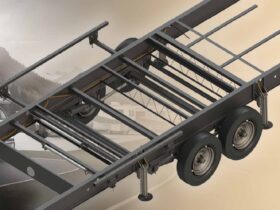
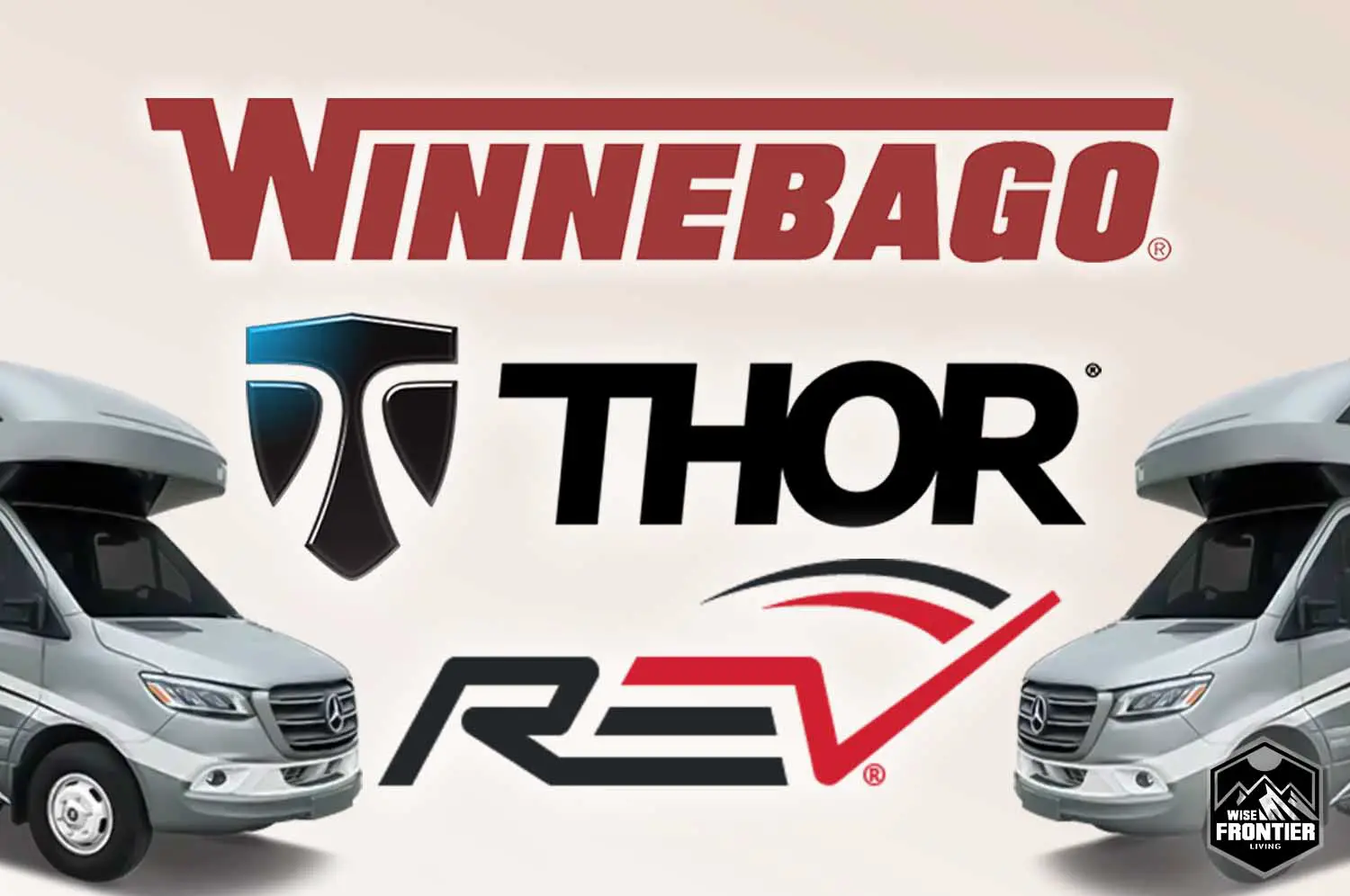



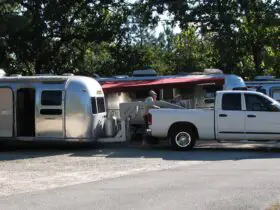
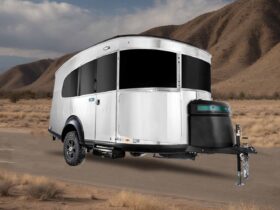
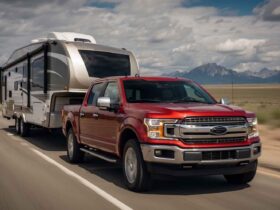

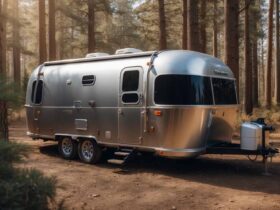
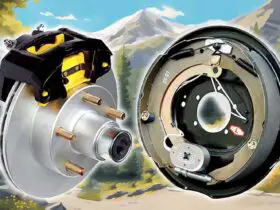
Leave a Reply